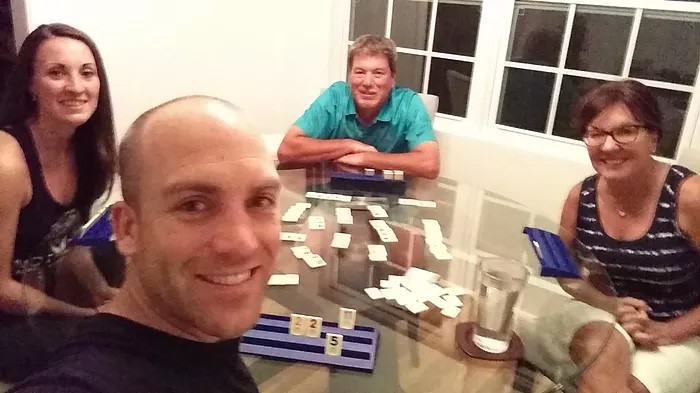As school grades were recently released I find it intriguing to see the stories published and the interpretations assumed.
From a teacher’s perspective, most understand that the variables that are in place make the “measuring” and the school grades themselves completely inaccurate.
What makes it a bit more troublesome is the perception that these grades evoke.
It’s like looking at a product in a health food store and assuming that anything that is in the store is indeed healthy without ever investigating the ingredients for yourself.
I happily do not have to concern myself with these inaccuracies and these invalid perceptions next year with Indi-ED, however as I continue to push for better for all kids, I will happily voice the facts.
Another misconception struck me as I was playing an intense game of Rummikub with my husband and my in-laws this weekend. If you’ve never played this game before, do so. It’s fun and makes you think.
As we were on our third game (and as much as I hate to admit it, my husband was on his way to another win-this time) I found myself thinking, “My brain hurts,” as I often do while playing this game.
It requires you to evaluate number sequences, look for potential patterns for yourself, consider your opponents strategies, and evaluate your own risk vs. reward plays. What that really translates to is that I was constantly thinking during this game.
While I was thinking to myself how many things you’re actually learning as you’re playing (yes, they can happen simultaneously) I also realized that my “brain hurt” because I was constantly planning, plotting, engaged and contributing no matter whose turn it was.
Here in Pinellas County one way that they evaluate teachers is based on the amount of student engagement a teacher may have in their classroom.
What this looks like is that when an administrator walks into a teacher’s classroom one of three times throughout the year and observes a lesson, one of the things that they look for is student engagement. For example, how many kids look to be working, how many have their hands raised, etc.
However, as a teacher who struggled with this often, when I have 22+ kids in front of me, how do I guarantee that I am engaging all 22+ of them at one time for an entire day?
The reality is that when you’re teaching a whole group lesson, you may have an engaging lesson or questions but for the sake of time and sheer lesson flow, can only realistically call on a few students. Or while it may look like everyone is ‘working’ there are quite a few who are skilled at the art of pencil holding that can be perceived to be ‘working’. Yet, the worst of it for me, was the reality of how little genuine, specific feedback I could provide to a few students while all of the others just gave it a go on their own.
I feel like the two overlap because what can be perceived as quality classroom engagement does not always guarantee that each and every student is genuinely learning. Could they be following directions? Sure. But are they able to actually contribute their ideas and build upon them? Not likely with a 22+ to 1 ratio.
Parents, take a moment to ask your student how often they received feedback from their teacher in the middle of a lesson. (Not after taking an assignment home and having it corrected.)
Something else to consider, teachers are forced to help certain students for certain allocated time amounts based on their assessment scores-nothing else. That ST Math program, the iStation reading program, the pull out programs that some students have-ALL based off of assessment scores.
Where does that leave your child? Do they test well? Then they probably aren’t allowed to work with the teacher directly as often. Do they test poorly? Then they may be mandated to have a certain amount of remediation time whether they need it or not and whether or not they received the exact same remediation strategy for the last two years or not.
Not only will Indi-ED be able to incorporate “fun” activities that contribute to genuine engagement and learning but we will also be able to allow our students to contribute and provide feedback to every student for every lesson, every day.
Our small groups will allow each student to have that opportunity. The lack of mandates means that our teachers will be able to use their professional judgment and what they know to be true about their students to make informed decisions. Their parents will be able to see it and most importantly, the students will be able to see it for themselves as they will be constantly creating and evaluating themselves.
I look forward to hearing feedback from our families and our students and engaging in a much more meaningful process to evaluate how to make positive changes without a prescribed teacher evaluation or school grade.
I look forward to our “highly effective” teachers or providing an “A school” perception based on clearly visible experiences and products. You’ll likely see evidence of enthusiasm and our students’ “brains hurting” from engaging and contributing so often. I guarantee that you’ll see more than hands raised and a few students responding.
(And yes, they will learn how to play Rummikub.)



